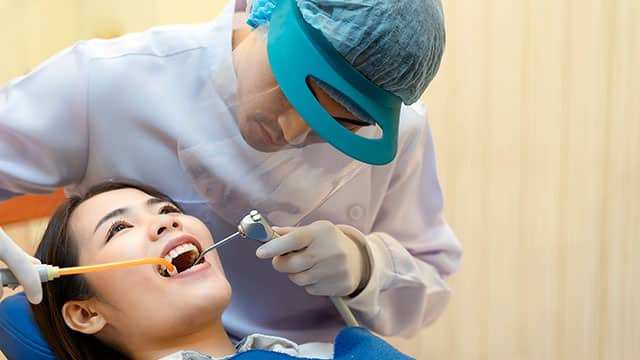What Is a Tooth Filling?
Most often, fillings are used to fill a decaying portion of a tooth (a cavity). According to The National Health and Nutrition Examination Survey, 92% of people aged 20-64 have had cavities in their adult teeth, so it's not by any means uncommon – but by practicing good oral hygiene, you can effectively prevent this tooth decay and avoid the fillings required to treat them.
Learn more about cavity prevention.
Fillings aren't only for cavities, though. They can also be used to fix teeth damaged by grinding (bruxism) and broken teeth. According to the Mayo Clinic, it's rare for bruxism to be so severe that it causes damage, but regular dental checkups can help you catch adverse effects early.
How Long After a Filling Procedure Should You Wait to Eat?
If you're wondering if you can eat after a filling, it's best to wait until after your local anesthetic wears off to ensure you don't chew on your tongue or your cheek without realizing it.
For silver fillings, it's typically recommended that you wait 24 hours before eating. If you get a resin filling, they set immediately, so you may be able to eat right away. Be sure to ask your dental professional if they have specific recommendations for your filling type and individual needs.
Learn more about filling types.
How to Chew After a Filling
By paying attention to what you eat after a filling and how you eat it, you can protect your new filling and lessen any pain.
- Chew on the opposite side of the mouth from your filling
If possible, avoid chewing with the tooth you just had filled to prevent pain and damage. - Chew slowly, bite lightly
Take your time and try not to bite all the way through. A lot of the pressure of chewing is from your top teeth and bottom teeth pressing together. By keeping your jaw loose, you can minimize pain. - Keep your mouth closed
This isn't just to practice good manners – sometimes cold air can cause pain in sensitive teeth. - Skip sticky foods
Some fillings take time to set after you leave the dentist's office. Eating sticky or gummy food could dislodge a new filling, so it's best to avoid them for a little while. - Avoid very hot or cold drinks
High and low temperatures can trigger pain in sensitive teeth. - Pass on the sweets
Sugary foods and drinks can trigger sensitivity in your tooth and could even promote bacterial growth around or under your new filling. - Avoid hard foods
Foods like nuts, hard candy, or ice can cause more pressure on your tooth when you chew. Tough foods like steak, too. That pressure can dislodge your fresh filling if it hasn't properly set yet.
Your dental professional is in the best position to give you recommendations based on your filling type and individual needs, so be sure to follow their advice. If your teeth are still sensitive after a couple of weeks, or if your pain gets worse instead of better, follow up with your dental professional so they can help determine causes and solutions. You could require a minor, painless adjustment, but it could also be a sign of a more serious issue.
Now that you know some tips for chewing after your filling procedure, you should be able to get through the day or two of post-filling sensitivity with confidence. Be sure to practice good oral hygiene so you can avoid more tooth filling procedures in the future. Brush at least twice a day, and don't forget to brush your tongue. Consider using other helpful products like an antimicrobial mouth rinse and tongue scrapers. And visit your dental professional for regular appointments, and you'll be able to maintain a level of oral health that makes you smile. You can do this!
Oral Care Center articles are reviewed by an oral health medical professional. This information is for educational purposes only. This content is not intended to be a substitute for professional medical advice, diagnosis or treatment. Always seek the advice of your dentist, physician or other qualified healthcare provider.
ORAL HEALTH QUIZ
What's behind your smile?
Take our Oral Health assessment to get the most from your oral care routine
ORAL HEALTH QUIZ
What's behind your smile?
Take our Oral Health assessment to get the most from your oral care routine















